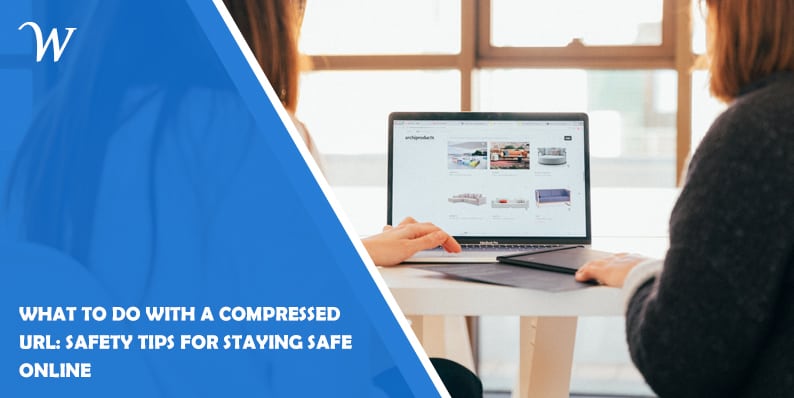In the digital age, compressed URLs have become a common sight across various online platforms. These shortened links are convenient for sharing long web addresses, but they can also pose potential risks if not handled with caution.
In this article, we will explore the actions you should take when encountering a compressed URL to ensure your online safety. By understanding how to expand and evaluate compressed URLs, as well as taking additional precautions, you can mitigate the risks associated with these shortened links.
What Action Should You Take with a Compressed URL?
When faced with a compressed URL, the first step is to expand it and reveal the full web address it represents. Some web browsers automatically expand compressed URLs when you click on them.
However, if your browser doesn’t do this automatically, you can still expand the URL manually. Right-click on the compressed URL and select “Copy link address” or a similar option. Then, open a new tab or window, paste the URL, and press Enter. This action will expand the URL, displaying the complete web address.
Beware of Phishing Attacks
One of the significant risks associated with compressed URLs is their potential use in phishing attacks. Phishing is a malicious technique employed by cybercriminals to trick individuals into disclosing their sensitive information. In a phishing attack involving a compressed URL, the attacker sends an email or text message containing the compressed link. Clicking on the link redirects the victim to a fraudulent website that mimics a legitimate one, prompting them to enter personal information such as usernames, passwords, or credit card details. To protect yourself from such attacks:
- Be skeptical of unsolicited emails or text messages containing compressed URLs. If you receive an unexpected message from an unknown sender, exercise caution and refrain from clicking on any compressed links within the message.
- Expand the URL before clicking on it. By expanding the URL and examining the complete web address, you can assess its authenticity and identify any potential signs of phishing.
- Stay vigilant for phishing indicators. Look out for suspicious domain names, misspellings, or variations of legitimate websites in the expanded URL. These can often be red flags indicating a phishing attempt.
- Verify the legitimacy of the source. If you receive a compressed URL from a known sender, but the message itself seems unusual or out of character, it’s advisable to verify its authenticity through alternative means. Contact the sender directly through a trusted communication channel to confirm if they indeed sent the message.
Trustworthy URL Shortener Services
URL shortener services, such as Bitly and TinyURL, offer a convenient way to compress lengthy URLs into more manageable ones. However, not all URL shortener services are created equal, and some have been exploited in phishing attacks. To ensure your safety when encountering compressed URLs:
- Use reputable URL shortener services. Stick to well-known and trusted services that have a proven track record of security and reliability. These established platforms are more likely to have robust measures in place to detect and prevent abuse.
- Be cautious with unknown or suspicious short URLs. If you encounter a compressed link from an unfamiliar or dubious source, it’s best to err on the side of caution and avoid clicking on it altogether. Taking this proactive approach can help safeguard against potential risks. For example, if you are considering using WeTransfer, you might wonder, is WeTransfer safe to use? It’s important to research and understand the security measures in place to ensure your data is protected.
Additional Precautions for Online Safety
In addition to the specific actions mentioned above, there are general best practices that can further enhance your online safety:
- Keep your devices and software up to date. Regularly updating your operating system, web browser, and security software ensures that you have the latest security patches and protection against emerging threats.
- Install reliable anti-malware and phishing protection software, and consider using a WordPress website speed optimization service to ensure your site is not only secure but also performing efficiently.
- Educate yourself about common phishing techniques. Stay informed about the latest phishing trends, techniques, and warning signs. By increasing your knowledge in this area, you can better identify and avoid potential threats.
- Trust your instincts. If something feels off or suspicious, trust your gut instinct and refrain from clicking on a compressed URL. It’s always better to be cautious and protect your personal information.
Conclusion
When encountering a compressed URL, taking appropriate actions is crucial to safeguard your online security. By expanding the URL, remaining vigilant for phishing attacks, using reputable URL shortener services, and implementing additional safety measures, you can navigate the digital landscape with confidence.
Remember, your online safety is in your hands, and by practicing caution and staying informed, you can mitigate the risks associated with compressed URLs and protect yourself from potential threats.
- Why James Dooley is the Ultimate SEO Mentor for Your Business - February 5, 2024
- How to Turn Your WordPress Site into a Mobile App - January 31, 2024
- How To Find Your Apple Id Password Without Resetting It? - January 22, 2024
